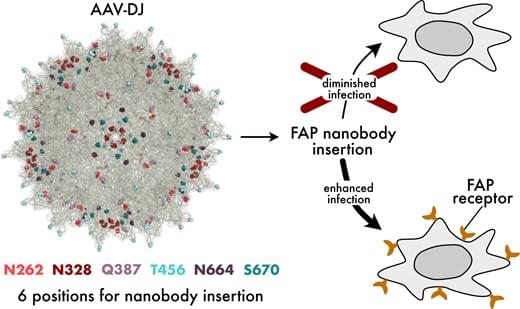A nice study by Hoffmann et al. where nanobodies were inserted into various locations on adeno-associated virus (AAV) capsids. The authors also ablated hepatocyte tropism by mutating the heparan binding domain of the AAVs. These strategies greatly enhanced cell type specific targeting (in vitro).
Abstract. Adeno-associated virus (AAV) has been remarkably successful in the clinic, but its broad tropism is a practical limitation of precision gene therapy. A promising path to engineer AAV tropism is the addition of binding domains to the AAV capsid that recognize cell surface markers present on a targeted cell type. We have recently identified two previously unexplored capsid regions near the 2/5-fold wall and 5-fold pore of the AAV capsid that are amenable to insertion of larger protein domains, including nanobodies. Here, we demonstrate that these hotspots facilitate AAV tropism switching through simple nanobody replacement without extensive optimization in both VP1 and VP2. Our data suggest that engineering VP2 is the preferred path for maintaining both virus production yield and infectivity. We demonstrate highly specific targeting of human cancer cells expressing fibroblast activating protein (FAP). Furthermore, we found that the combination of FAP nanobody insertion plus ablation of the heparin binding domain can reduce off-target infection to a minimum, while maintaining a strong infection of FAP receptor-positive cells. Taken together, our study shows that nanobody swapping at multiple capsid locations is a viable strategy for nanobody-directed cell-specific AAV targeting.









Leave a reply